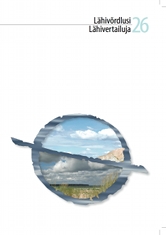Karjalankieliset verkkosivut virtuaalisena kielimaisemana
Developing websites in the Karelian language as part of virtual linguistic landscape
Author(s): Ilia MoshnikovSubject(s): Language and Literature Studies, Library and Information Science, Computational linguistics
Published by: Eesti Rakenduslingvistika Ühing (ERÜ)
Keywords: revitalization; endangered language; virtual linguistic landscape; Internet; website; Karelian;
Summary/Abstract: Today, besides various physical linguistic landscapes, also virtual ones are being actively developed in cyberspaces such as the Internet and digital environments. Virtual linguistic landscapes have recently become a significant indicator of a level of language vitality. Indeed, minority and endangered languages are experiencing multiple opportunities to be revived and promoted. Because of modern digitization, the Karelian language has also become part of the Internet. Having access to the Karelian language in cyberspace enables the use this language, even when it might be difficult to find in real life. This study is focused on exploring which varieties of Karelian are used today as an optional language of communication at different websites. In addition, the study aims at investigating the contexts in which these particular websites are being developed and the initiators of this development process. The research data consists of 16 websites offering the Karelian language as a language of the virtual interface. The research material has been analyzed based on both physical and virtual linguistic landscape theories. The former type was introduced by Landry and Bourhis in 1997, and later Ivkovic and Lotherington (2009) adapted it to develop their own virtual linguistic landscape theory. Furthermore, Reh’s (2004) four multilingual writing strategies, particularly duplicating, fragmentary, overlapping and complementary, have been used to analyze the interfaces and contents of the selected websites. This study reveals that the most commonly used Karelian dialect in virtual linguistic landscapes is Livvi-Karelian; 10 out of the 16 sites use this particular variety as the language of the interface. Of the remaining websites, three use only the Karelian Proper dialect and three others other a language choice in one of the two above-mentioned dialects. The results may primarily be explained by there being no common standard Karelian language; moreover, the Karelian language does not have an official status in any country. Analyzing the visibility of the Karelian language in the cyberspace reveals that most websites have been developed by cultural societies, linguistic researchers, newspaper editorial teams or individuals interested in the Karelian language. Thus, this study presents an overall picture of visibility of Karelian on the Internet and suggests a few possible ways of promoting this endangered language not only in the virtual environment but also in real life. In fact, even a minor initiative contributes to the revitalization of the Karelian language.
Journal: Lähivőrdlusi. Lähivertailuja
- Issue Year: 2016
- Issue No: 26
- Page Range: 282-310
- Page Count: 29
- Language: Finnish

